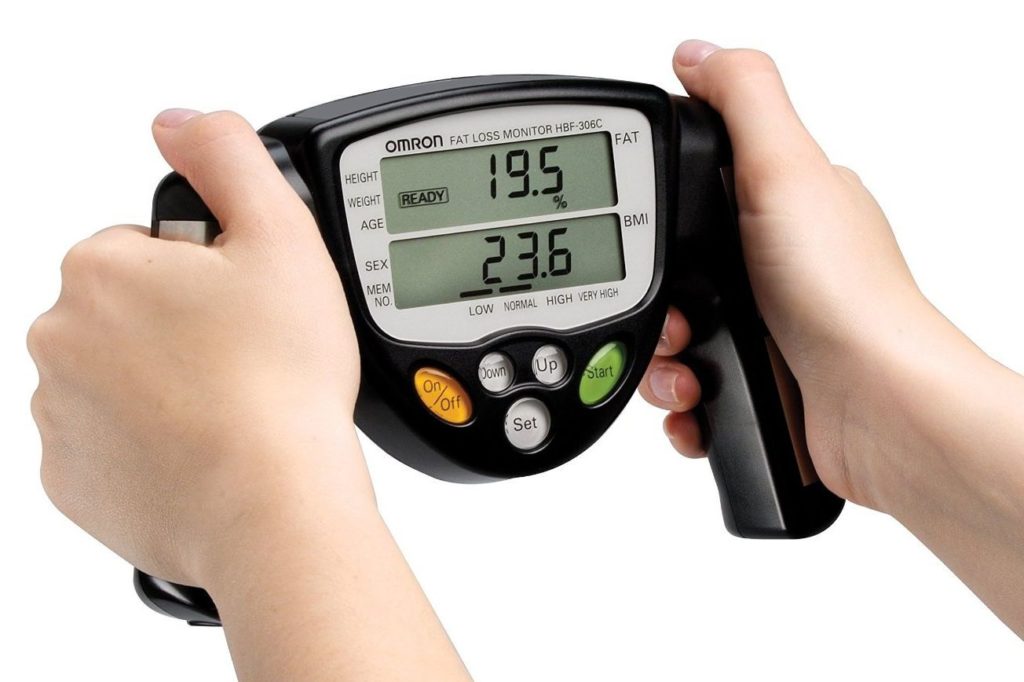Fat is necessary for bodily functions. It regulates body temperature, cushions and insulates organs and tissues and is the main form of the body’s energy storage.
What is body fat?
Your body fat percentage is simply the percentage of fat your body contains. If you are 150 pounds and 10% fat, it means that your body consists of 15 pounds fat and 135 pounds lean body mass (bone, muscle, organ tissue, blood and everything else).
How much body fat is healthy?
A healthy body fat percentage range for women is 20% – 30%
Keeping your body fat percentage at a healthy level can help to reduce your risk of getting serious diseases, in particular, heart disease.
Why is body fat Percentage important?
Body fat is far more important than weight which includes things such as muscle, bone and water. If you don’t have much muscle, your body weight may indicate that you are not over weight, even though you may be ‘over fat’. If you’re a healthy weight without having to try too hard, you could still have an unhealthy percentage of fat in your body. This is sometimes known as ‘skinny-fat’ or ‘normal-weight obesity’ – people who look healthy but have a high body fat percentage, which means that they are at a high risk of getting diabetes and heart disease, but you wouldn’t know it to look at them. They also don’t always have the incentive to exercise as this is seen as something that you do when you want to lose weight, so they just become more and more unhealthy. For that reason, more importance is placed on the percentage of weight that is fat rather than what the scales may say.
Scales V Body fat percentage?
Body fat measurements and the tape measure are the best ways for measuring weight loss. Often, when someone says that they want to lose weight what they really mean is that they want to lose fat!
It’s difficult to understand what your weight means by just standing on the scales as this tells you very little because two people can have the same weight but have completely different body compositions and health risks. Your body fat percentage (PBF) tells you far more than just how heavy you are. It is the one measurement where you can compare you to you! If you’re too obsessed with the number on the scales, you will invariably compare yourself to other people without taking into consideration differences in height, muscle mass, genetics etc and weight becomes purely a number, not telling you what your weight is made up of.
When you’ve had your body fat measured what does it mean?
Measuring body fat is a good way to ascertain if you are at risk of developing certain diseases due to having high body fat. You should have your body fat measured every 12 weeks in order to monitor your progress.
Don’t expect to see sudden changes in body fat. This takes time and changes can be seen between 8-12 weeks.
How do we measure your body fat?
We use a hand-held Bio-electrical impedance analysis scanner (BIA) to measure body fat. This shows the amount of fat in the body as a percentage. A low frequency current is passed through the body and recognises the different impedance (resistance) it meets as it passes through fat, water and muscle. This information allows it to calculate the percentage of body composition that is fat.
What are the health risks if your body fat is too high?
Heart disease – this is caused by plaque build-up inside the artery walls (atherosclerosis) which leads to high blood pressure and clogged arteries. Also, the blood loses its ability to clog which increases the risk of stroke.
Diabetes – Excess weight affects insulin, which leads to diabetes. Having diabetes increases your risk of heart disease – it’s a vicious circle.
Arthritis – A higher body fat percentage, higher waist circumference and obesity are all associated with a higher risk of developing rheumatoid arthritis and osteoarthritis.
Gallstones – Carrying extra fat, especially around the abdomen can make it harder for the gallbladder to empty which means that bile will stay in the gallbladder and become stagnant, forming gallstones.
High Blood Pressure – More fat means that there is more tissue to deliver blood to. The resistance around the heart is greater, the more fat there is. It is also harder for the blood to return to the heart when there is less lean muscle mass helping it’s return.
Breast Cancer – According to information provided by the Centre for Disease Control and Prevention (CDC), one of the major risk factors for developing breast cancer is ‘being overweight or obese after menopause’.
BMI V Body fat
Body fat is very important, even more so than BMI which doesn’t give a true breakdown of your body composition. You may have a normal BMI but have a high body fat percentage.
BMI is not an exact way to determine body fat percentage as muscle mass and bone density cannot be distinguished from fat, therefore, it is hard to know how much BMI is taken up by fat and how much by bones and muscles.
Having a high body fat percentage can lead to many diseases including the ones listed above.
Having a high body fat percentage is easily preventable or reversible by eating the right amounts of a healthy, nutritious diet and by resistance training. Resistance training is vital as it is the only thing that preserves muscle tissue over time. Cardio is also important as it burns calories, but it doesn’t do much to prevent muscle loss, and you need more muscle to burn more calories. Resistance exercise wins hands down in terms of losing fat without losing muscle!
